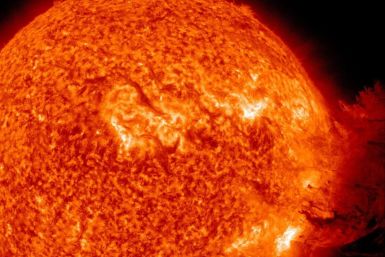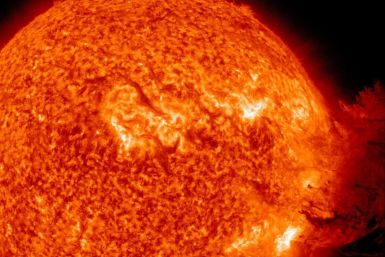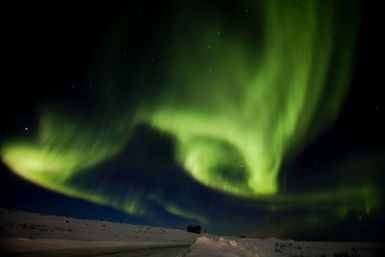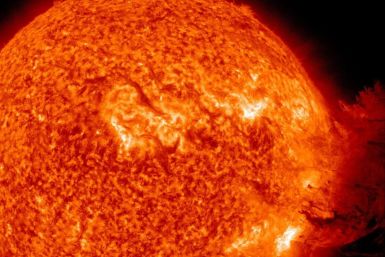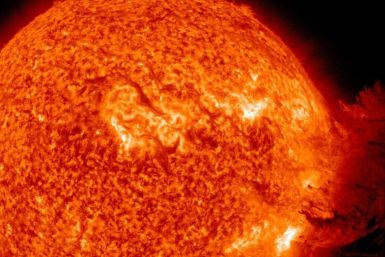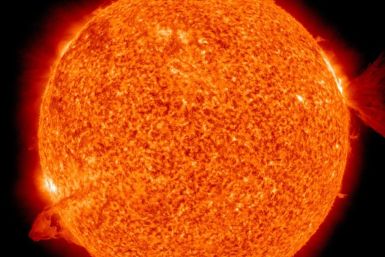New data released Tuesday at the annual meeting of the solar physics division of the American Astronomical Society in Las Cruces, New Mexico, may suggest that we are headed towards a solar event that hasn’t happened in hundreds of years.
Google made its biggest green investment yet $280 million dollars in a deal with Solarcity, which will use the funds to finance rooftop installations.
Google and solar power company SolarCity formed a partnership to create a new $280 million fund designated for residential solar projects -- the largest of its kind in the United States.
Following stocks may see active trading on June 14. They include, Apple, Nokia, HP and Dollar Thrifty.
The top after-market NASDAQ Stock Market gainers are: Double Eagle Petroleum, GT Solar International, Cytori Therapeutics, A-Power Energy Generation Systems and Hercules Offshore. The top after-market NASDAQ Stock Market losers are: AngioDynamics, Identive Group, SIGA Technologies, BroadSoft and Saba Software.
NASA has released a new image and scientific findings from the first spacecraft to orbit Mercury, the innermost and smallest planet in the Solar System.
Scientists from around the world are expecting beautiful auroras across the sky on Thursday as strongest solar flares seen in five years are sending a mass of charged particles towards Earth, which could cause radio interference and auroral displays.
The biggest solar flare in four years is moving towards Earth at a rate of at 1400 km/s and is expected to reach early June 9.
The strongest solar flare seen in five years erupted from the Sun on early Tuesday, and is heading towards the Earth which could cause radio, satellite interference and auroral displays on Thursday.
The strongest solar flares seen in five years are sending a mass of charged particles towards Earth, which could cause radio interference and auroral displays.
There is a 25 percent of the Northern Lights being visible tonight on Earth because of the Solar Flare and coronal mass ejection that occurred yesterday.
As the biggest solar flare in four years was observed by NASA early Tuesday, the unusual and spectacular activity of the sun is likely to create another spectacle in the sky tonight - a display of northern lights, or Aurora Borealis.
New Yorkers may or may not get to see the Northern Lights in the Big Apple's skies tonight or tomorrow night, but the solar flare that is increasing auroral activity has already produced some breathtaking images, as this video shows.
The biggest solar flare in four years erupted from the sun on Tuesday and is heading towards Earth in an event that could disrupt power grids and satellites.
Because the Sun experienced the biggest solar flare in four years yesterday, New Yorkers may get to see the Northern Lights tonight or, possibly, tomorrow night.
A biggest solar flare in four years erupted from the Sun on early Tuesday, which is heading towards Earth and could disrupt power grids and satellites. The flare was a different kind as it started out slow, then the sun blasted it off like a volcanic eruption.
An unusual, medium-sized solar flare has erupted from the sun, observed by a NASA space observatory on Tuesday.
The sun emitted an unusual solar flare, a small radiation storm and a spectacular coronal mass ejection (CME) from a sunspot complex on the solar surface, on Tuesday. The flare peaked at 1:41 a.m. ET, according to NASA’s Solar Dynamics Observatory (SDO).
A solar flare that erupted on Tuesday in the Sun is heading towards the Earth and could disrupt power grids and satellites. The flare, which is backed by a small radiation storm and a spectacular coronal mass ejection (CME), might stimulate auroras on Thursday.
High-latitude sky watchers should be on alert for auroras on Wednesday and Thursday evenings, when coronal mass ejection (CME) from solar flare observed on Tuesday glance at Earth's magnetic field, NASA said in a statement.
The sun unleashed an unusual solar flare on early Tuesday, a small radiation storm and a spectacular coronal mass ejection (CME) from a sunspot complex on the solar surface. The flare peaked at 1:41 a.m. ET, according to NASA’s Solar Dynamics Observatory (SDO).
A “spectacular” solar flare sailed from the sun on Tuesday, June 07. The flare peaked at 1:41 a.m. ET, according to NASA’s Solar Dynamics Observatory (SDO).















